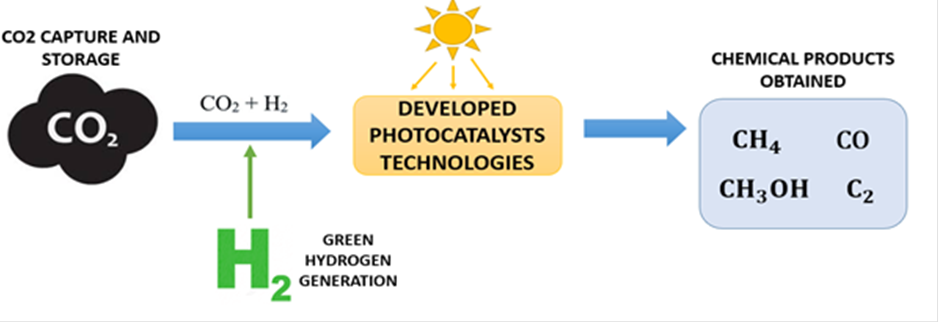Strategic project PHOTORED kicks off
Finding new ways to use CO2 and turn it into valuable products is of vital importance to overcome the challenges our society faces. This is exactly what the project “Photocatalytic CO2 reductions by green hydrogen” PHOTORED, coordinated by ICIQ, aims to do. “We’re very happy to participate in this project, as it is aligned with the institute’s strategic goals: sustainability and renewable energy,” explains Emilio Palomares, ICIQ director, group leader and member of the PHOTORED project.
The four partners of the PHOTORED consortium have met virtually on December 22nd to kick-start the project, which will last three years. The consortium brings together four partners of complementary expertise: the Institute of Chemical Technology (ITQ, UPV-CSIC) and ICIQ will work on materials preparation as well as bring their expertise in photocatalysis; the Industrial-Technological Centre from Castilla La Mancha (ITECAM) will focus on the production of green H2; the large company DAM will bring their expertise in urban wastewater treatment and biogas facilities exploitation.
During the meeting, the members of the consortium have decided what will be the first challenges to tackle on the road towards the development of materials to promote the valorization of CO2 through its selective hydrogenation with solar light.
More specifically, the scientists involved in PHOTORED will prepare four types of photocatalysts to selectively transform CO2 and green H2 (obtained through electrolysis of water obtained by purification of urban wastewater) into several products of interest for the chemical industry such as methane, methanol or CO. The use of the new photocatalysts will allow promoting these reactions by solar light as the sole or primary energy source in a continuous flow setting.
Implementing valorization processes directly at the source of CO2 emissions, such as urban wastewater treatment and biogas (constituted by a 60/30 mixture of methane and CO2) facilities would avoid their emission into the atmosphere. With this idea in mind, the project aims to develop a laboratory-scale pilot plant to prove the technical and economic viability of the process and increase the technology readiness of the photocatalytic reactions. This way, the consortium aims at achieving the required CO2 conversion, product selectivity and photocatalyst stability.
